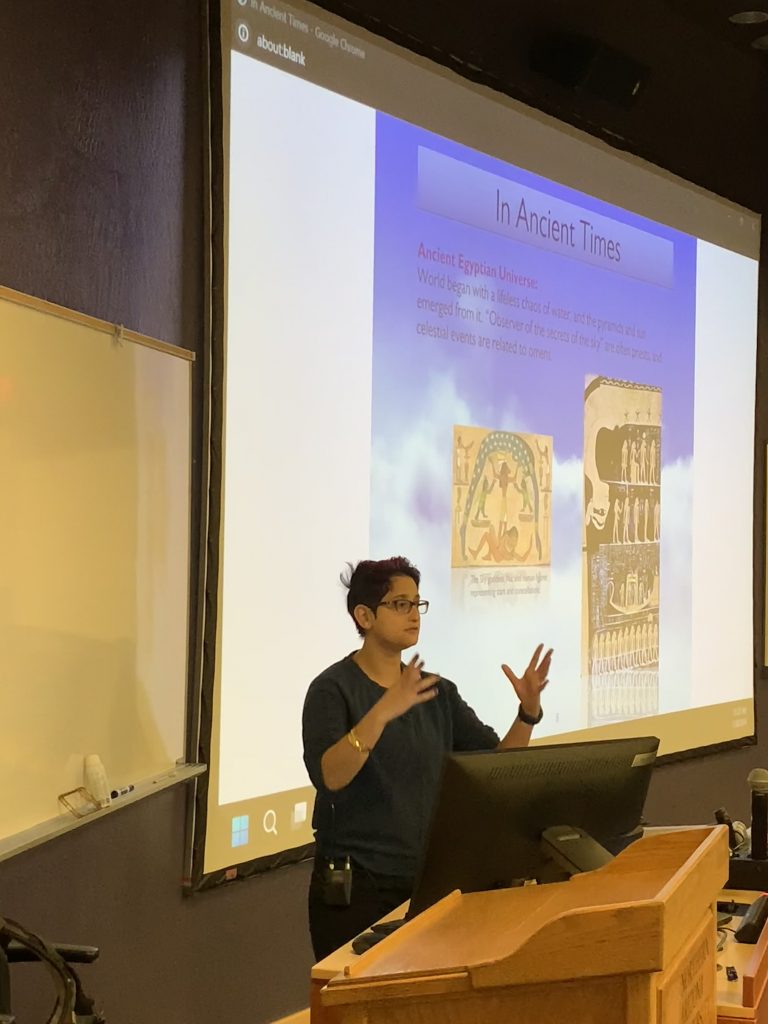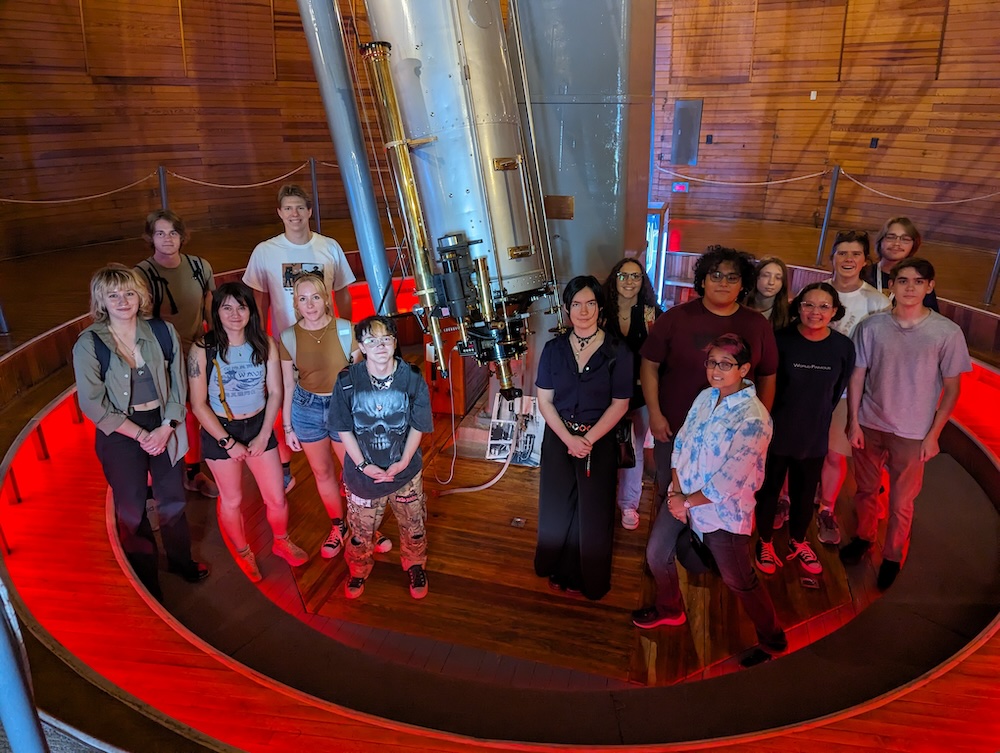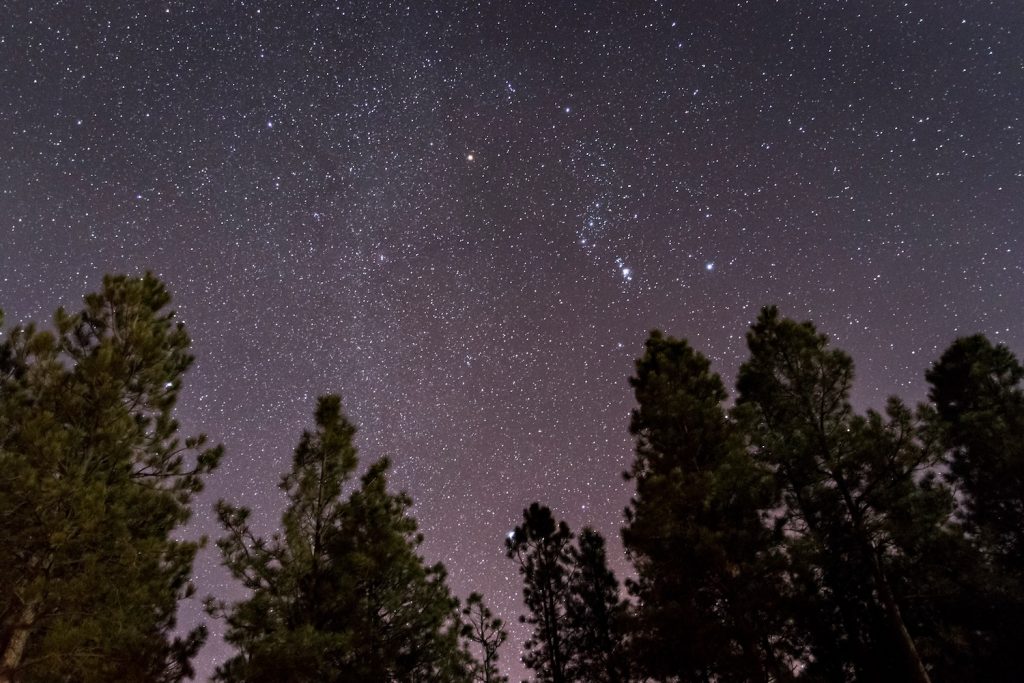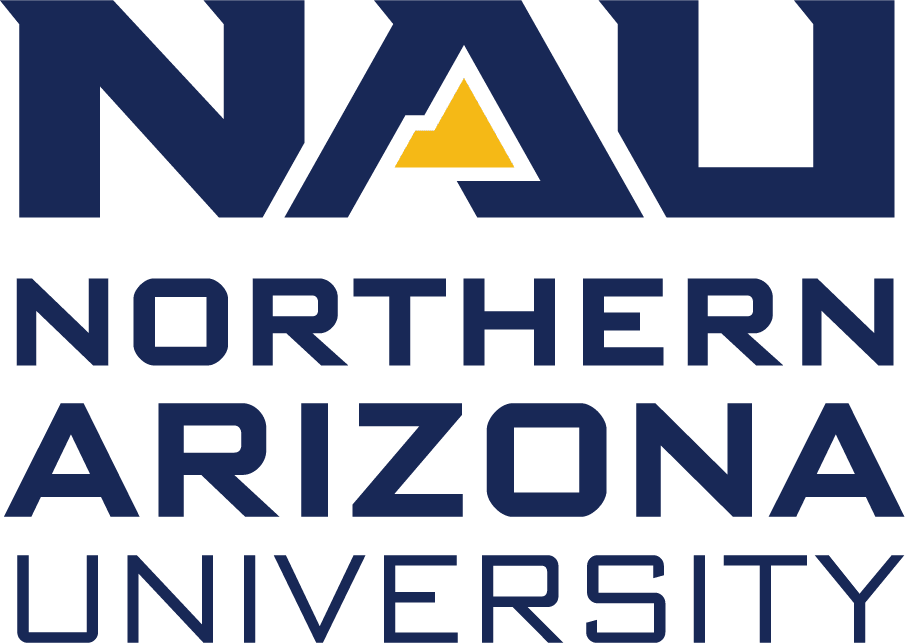It’s no secret that Flagstaff is one of the best stargazing cities in the world: In 2001, it was named the first International Dark Sky City thanks to its commitment to reducing light pollution. Since then, it’s become a magnet for people who are passionate about space—including Jasmine Garani, a lecturer in astronomy at NAU.
Most of us can only hope to identify one or two constellations when we look up at the sky, but Garani knows them all. We sat down with the astronomer to find out what’s in the sky right now, what’s coming up later this year and why you shouldn’t believe all the supernova rumors you hear.

How did you become an astronomer and find your way to NAU?
I’ve always liked space—I even had an astronomy-themed bedroom growing up. I went to college as a physics major, but then I took an astronomy class and decided I liked both, so I ended up getting a bachelor’s degree in physics and astronomy. In graduate school at Arizona State, I realized I liked teaching more than research, so I got a master’s degree in astronomy and astrophysics.
This is my second year at NAU, teaching classes like Introduction to Indigenous Astronomy, where we look at the relationships that different Indigenous cultures in the Southwest and around the world have to the sky, how they used it for farming and navigation and how the constellations have factored into their stories and myths. And new this semester, I’m teaching Celebrating Diversity in Astronomy!
Which constellations are visible in Flagstaff this time of year?
The easiest constellation to find in the wintertime is Orion, the hunter with the sword and bow and arrow. You can pretty quickly spot Orion’s belt, which is just three stars in a row. And depending on how well you can see the sky—we’re lucky to have dark skies and lots of clear nights here in Flagstaff—you might also be able to spot Orion’s two feet, shoulders and bow.
If you follow Orion’s belt upward, it’ll point you to the constellation of Taurus. Then you can continue in that direction to the Pleiades, which is where the Subaru car logo comes from. The Pleiades is a tiny cluster of seven stars, and if you have really good eyesight, you might be able to make out five or six of them.
If you return to Orion’s belt and this time look up and to the left, you’ll see the Gemini twins as well. Also in that area is Sirius, the brightest star in the sky.
If you have a telescope or visit an observatory, another great one to look out for this time of year is Jupiter. Even with a small telescope, you’ll be able to see its dark stripes, which is pretty cool.
What special events are happening in the sky this year?
On April 8, we’ll have a total solar eclipse. The best views will be in the eastern United States; it’ll go through Waco, Texas, and St. Louis, continuing through the Northeast and into Canada. If you’re staying local, you can still see a partial eclipse; the sun will be about 68 percent
There will be meteor showers April 15-29, though they may be hard to see: When the showers peak on April 21 and 22, we will have a nearly full moon, and it will be bright enough to somewhat obscure the showers. Luckily, if you miss out, there are always more meteor showers to see: the Perseids happen every year in August, and the Leonids happen in November.

Some scientists say Betelgeuse could explode soon. Is that true?
Astronomers believe that the very large, very bright star Betelgeuse—Orion’s top left shoulder—is probably the next star in our sky to go supernova and explode. It’s about 10 million years old and very close to the end of its lifecycle, relatively speaking. When that happens, it will be a major astronomical event. The thing is, that could happen today, it could happen in 20 years or it could happen a million years from now.
Can you share a few stargazing tips?
There’s a great app called Stellarium that lets you find constellations really easily. You can just point your phone at the sky and see which constellations are above you.
In general, the farther away you can get from the city, the better. Go away from brighter streetlights, whether it’s to a darker suburban neighborhood or to somewhere like Buffalo Park. Because we live in a Dark Sky City, you don’t have to go too far to get away from bright lights!
Of course, one of the best stargazing locations is our observatory right on campus. The Barry Lutz telescope is accessible to all members of the public on Friday nights during the school year. The telescope operators are always there to guide you and answer any questions.
What’s one cool astronomy fact you wish everyone knew?
Saturn is less dense than water—so theoretically, if you filled up a Saturn-sized bathtub with water and stuck it in there, it would float!
Jill Kimball | NAU Communications
(928) 523-2282 | jill.kimball@nau.edu




